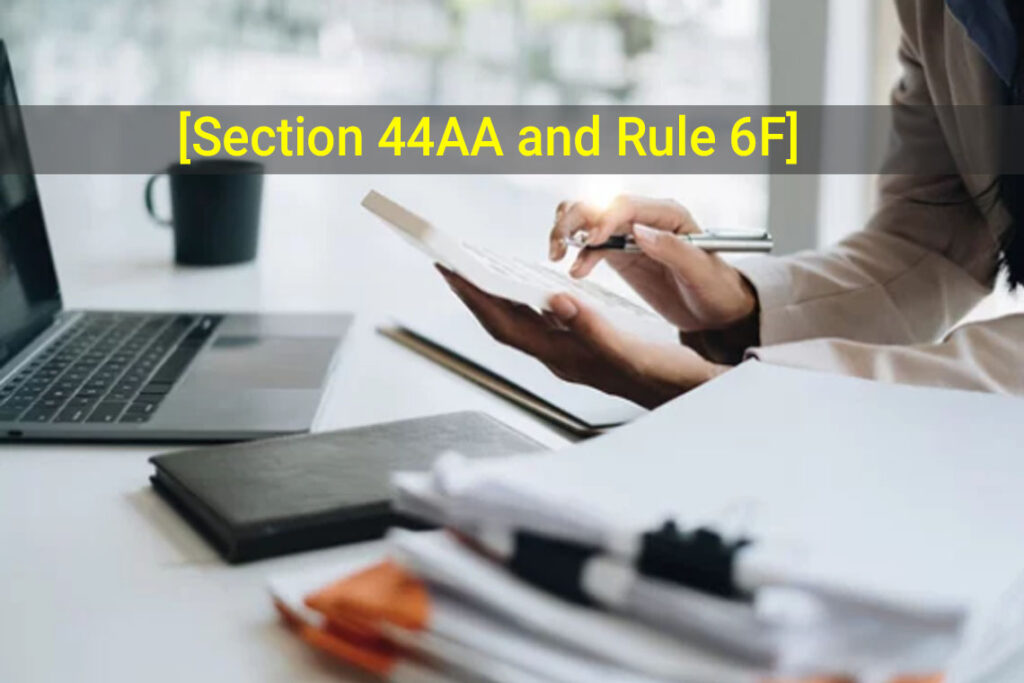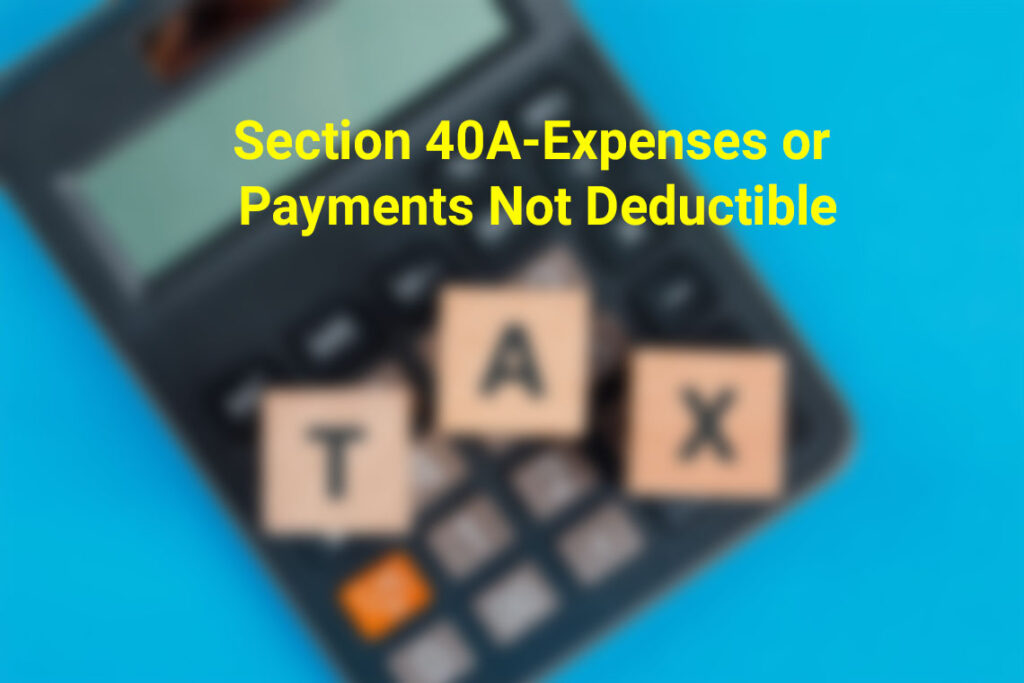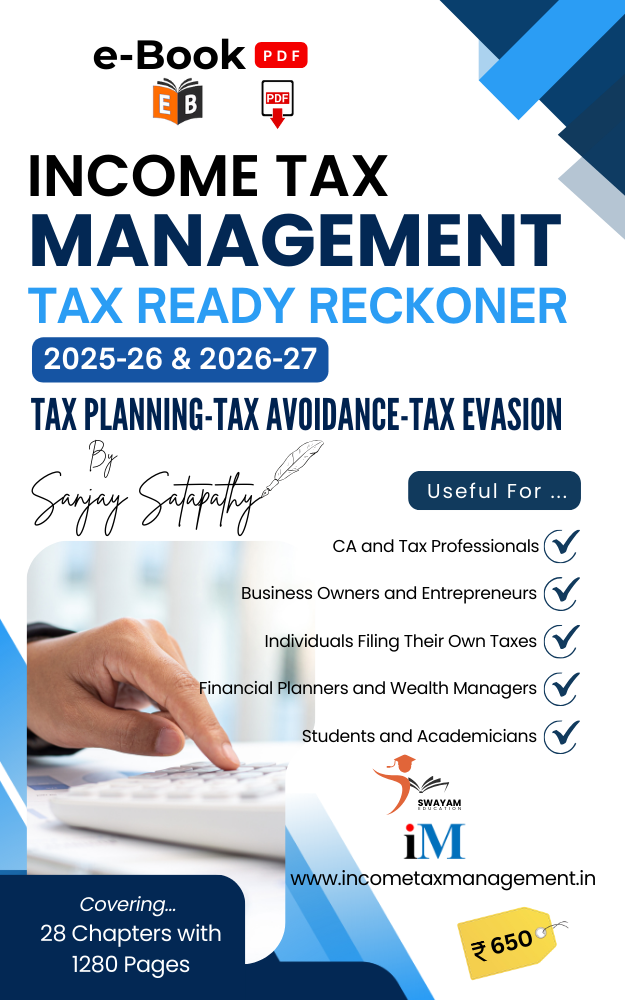List of all Other Deductions which are specified under section 36 of the Indian Income Tax Act,1961, for computing income arising from Business and Profession.
Deductions which are specified under section 36 for computing income arising from Business and Profession include the following:
1. Insurance premium of stocks [Section 36(1)(i)]:
The amount of any premium paid in respect of insurance against risk of damage or destruction of stocks or stores used for the purposes of the business or profession is allowed as deduction. As already explained paid here means actually paid or incurred according to the method of accounting adopted.
2. Insurance premium of cattle [Section 36(1) (ia)]:
The amount of any premium paid by a federal milk cooperative society towards an insurance on the life of the cattle owned by a member of the primary milk cooperative society is allowed as deduction provided such primary society is engaged in supplying milk raised by its members to such federal milk co-operative society.
3. Insurance on health of employees [Section 36(1) (ib)]:
The amount of any premium paid by any mode of payment other than cash by the assessee as an employer to effect or keep in force an insurance on the health of his employees under the scheme framed by (i) the General Insurance Corporation of India, or (ii) any other insurer approved by IRDA, and approved by the Government of India is allowed as deduction. There is no monetary ceiling for this deduction.
4. Bonus or Commission to employees [Section 36(1)(ii)]:
Any sum paid to an employee as bonus or commission for services rendered, is allowed as deduction, provided such sum would not have been payable to him as profits or dividends if it has not been paid as bonus or commission. It may be noted that this deduction is allowable only on payment basis. However, it can be claimed on accrual basis also subject to provisions of section 43B.
5. Interest on borrowed capital [Section 36(1)(iii)]:
The amount of interest paid in respect of capital borrowed for the purposes of business or profession is allowed as deduction.
| Interest means interest payable in any manner in respect of any moneys borrowed or debt incurred (including a deposit, claim or other similar right or obligation) and includes any service fee or other charge in respect of the moneys borrowed or debt incurred or in respect of any credit facility which has not been utilised. [Section 2(28A)] |
As per the Supreme Court in the case of Madhav Prasad Jatia v CIT (1979) 118 ITR 200 (SC) for claiming deductions under this sub-clause, the basic requirements are—
(A) The money i.e. (capital) must have been borrowed by the assessee;
(B) It must have been borrowed by the assessee for his business, profession or vocation; and
(C) The assessee must have paid interest on the amount and claimed it as an allowance.
‘Paid’, as already explained, means actually paid or due, depending upon the method of accounting employed by the assessee.
Interest on borrowing for acquisition of an asset shall not be allowed as revenue expenditure:
No such deduction shall be allowed in respect of any amount of interest paid, in respect of capital borrowed for acquisition of new asset (whether capitalised in the books of account or not) and such amount of interest is for the period beginning from the date on which the capital was borrowed for acquisition of the asset till the date on which such asset was first put to use. Hence, such interest shall be added to the cost of the asset.
6. Discount on issue of zero-coupon bonds to be allowed as deduction on pro rata basis [Section 36(1) (iiia)]:
Any discount on issue of zero coupon shall be allowed on a pro rata basis having regard to the period of life of such bond calculated in a manner as may be prescribed.
(1) Meaning of discount:
Discount means the difference between the amount received or receivable at the time of issuing the bond and the amount payable by on maturity or redemption of such bond;
(2) Meaning of period of life of the bond:
Period of life of the bond means the period commencing from the date of issue of the bond and ending on the date of the maturity or redemption of such bond.
Zero coupon bonds can be issued by an infrastructural capital company or a infrastructural capital fund or a public sector bank or a scheduled bank.
7. Employer’s Contribution to a recognised Provident Fund or Approved Superannuation Fund [Section 36(1)(iv)]:
Any sum paid by the assessee as an employer by way of contribution towards a recognised provident fund or approved superannuation fund or any other approved welfare scheme of employee is allowed as a deduction subject to such limits as may be prescribed for the purpose of recognising the provident fund or approving the superannuation fund, etc. as the case may be.
“Any sum paid” is to be dealt with reference to section 43B of the Income-tax Act i.e. if such sum is payable at the end of the year it will not allowed as deduction on due basis unless the payment of the same is actually made on or before the due date of furnishing the return of income prescribed under section 139(1). However, if the payment is made subsequent to the due date, it shall be allowed as deduction in the year in which it is paid.
8. Employers’ contribution towards a pension scheme [Section 36(1) (iva)]:
Any sum paid by the assessee as an employer by way of contribution towards a pension scheme, as referred to in section 80CCD on account of an employee to the extent it does not exceed 10% of the salary of the employee in the previous year shall be allowed as deduction. Salary for the above purpose includes dearness allowance, if the terms of employment so provide, but excludes all other allowances and perquisite.
9. Employer’s contribution to an approved gratuity fund [Section 36(1)(v)]:
Any sum paid by the assessee as an employer by way of contribution towards approved gratuity fund, created by him for the exclusive benefit of his employees under an irrevocable trust, shall be allowed as a deduction subject to the provisions of section 43B as mentioned in above.
10. Sums received from employees towards certain welfare schemes if credited to their accounts before the due date [Section 36(1) (va)]:
Certain employers were deducting amounts from the salaries of the employees towards certain welfare schemes like PF, ESI, etc. but were not crediting it to the employees’ accounts even after long periods. This Section was introduced to check such malpractices. Sum deducted from the salary of the employee as his contribution to any provident fund or superannuation fund or ESI or any other fund for the welfare of such employee is now treated as an income of the employer as per section 2(24)(x). However, if such contribution is actually paid on or before the due date mentioned below the deduction will be allowed for the same under this clause.
“Due date” means the date by which the assessee is required as an employer to credit an employee’s contribution to the employee’s account in the relevant fund under any Act, rule, order or notification issued thereunder or under any standing order, award, contract of service or otherwise. [Explanation 1]
| The Finance Act, 2003 had made some changes relating to employer’s contribution to such funds [see sections 43B and 36(1)(iv)] but it has not made any changes in clause (va) and hence, employee’s contribution to such funds shall not be eligible for deduction if it is not paid before the due date under the respective welfare Acts. |
11. Allowance in respect of dead or permanently useless animals [Section 36(1)(vi)]:
Expenditure incurred on the purchase of animals otherwise than as stock in trade which are used for the purpose of business or profession is a capital expenditure. However, no depreciation is allowed on such capital expenditure. Such capital expenditure will be written off as a loss in the year in which the animal dies or becomes permanently useless for such business or profession. If any amount is realised on sale of the carcasses or the animals, such amount recovered shall be deducted from the capital expenditure which was incurred for the purchase of the animal and the balance amount shall be allowed as a deduction under this section.
12. Bad debts [Section 36(1)(vii)]:
The amount of any bad debt or part thereof, which has been written off as irrecoverable in the accounts of the assessee for the previous year, shall be allowed as a deduction subject to the provisions of section 36(2) which are as under: —
(a) Such debt or part thereof must have been considered in computing the income of the assessee of the previous year or of an earlier previous year, or
(b) It represents money lent in the ordinary course of the business of banking or money-lending which is carried on by the assessee.
If there is a bad debt on account of sale made, it will be allowed as a deduction because sale has been treated as income. Similarly, in the case of a money lending business if interest is not realisable it will be allowed as a deduction because it has been treated as income either of current year or earlier year. However, there is one exception to this rule, where bad debt will be allowed even if such debt, which has become bad, has not been treated as an income. In the case of money lending business, interest is an income. If that income is not realisable, it can be treated as a bad debt. However, in this case even the money which was lent, if not realised, can be treated as a bad debt as per condition (b) above.
| If there is any advance given for purchase of raw material and it is forfeited by the creditor, it will not be treated as a bad debt because it has never been treated as income. It will, however, be allowed as a loss u/s 28. |
Thus, the following are the requisite conditions for allowance of a debt as bad debt:
(A) It must be a debt or part thereof;
(B) Such debt must be revenue in nature;
(C) Such debt must have considered in computing the income of the assessee or it represents money lent in the ordinary course of business of banking or money lending which is carried on by assessee;
(D) Such debt must be incidential to the business or profession of the assessee;
(E) Such debt must have been written off as irrecoverable in the accounts of the assessee for the previous year.
Treatment of subsequent recovery of an amount claimed and allowed as a bad debt [Section 41(4)]:
If any amount has been claimed and allowed as a bad debt, then if the amount is subsequently recovered, it shall be treated as the income of the previous year in which it is recovered, even though, the business in respect of which the bad debt was allowed may or may not continue in the previous year in which it is recovered. For example, X sold goods of ₹80,000 on credit to Y during the previous year 2017-18. Despite all efforts, X could not recover the money and finally the amount of ₹80,000 was written off in the accounts of X during the previous year 2018- 19. This amount of ₹80,000 was allowed as deduction for the assessment year 2019-20. In the previous year 2019- 20, X could recover ₹25,000 from Y out of the amount written off. This amount of ₹25,000 shall be treated as an income in the assessment year 2020-21.
Provision for bad and doubtful debts not eligible for deduction [Explanation to section 36(1)(vii)]:
Any bad debt or part thereof written off as irrecoverable in the accounts of the assessee shall not include any provision for bad and doubtful debts made in the accounts of the assessee.
13. Provision for bad and doubtful debts of certain banks and financial institutions [Section 36(1)(viia)]:
In respect of any provision for bad and doubtful debts made by,—
(a) a scheduled bank (not being a foreign bank) or a co-operative bank (other than a primary agricultural credit society or a primary co-operative agricultural and rural development bank) or a non-scheduled bank, a deduction shall be allowed (i) of an amount not exceeding 8.5% of the total income (computed before making any deduction under this clause and Chapter VIA i.e. deductions u/s 80C to 80U) and (ii) of an amount not exceeding 10% of the aggregate average advances made by the rural branches of such bank computed in the prescribed manner.
(b) a bank incorporated by or under any foreign laws or a public financial institution or a State Financial Corporation or a State Industrial Investment Corporation, a deduction shall be allowed of an amount not exceeding 5% of the total income (computed before making any deduction under this clause and Chapter VIA).
(c) a non-banking financial company, a deduction shall be allowed of an amount not exceeding 5% of total income (computed before making any deduction under this clause Chapter VIA).
| No deduction shall be allowed under section 36(1)(vii) to such institution as bad debt if the actual bad debt during the year is equal to or less than the provision for bad and doubtful debts. However, if the actual bad debt of such institutions in the relevant previous year is more than the provision of bad and doubtful debt, the balance shall be allowed as deduction as bad debt under section 36(1)(vii). |
14. Amount carried to special reserve credited and maintained by special entity [Section 36(1)(viii)]
Deduction under this section is allowed to a specified entity of an amount not exceeding 20% of the profits derived from eligible business computed under the head profits and gains of business or profession (before making any deduction under this clause) carried to special reserve account created and maintained by such specified entity.
However where the aggregate of the amount carried to such reserve account from time to time exceeds 200% of the amount of the paid up capital and of general reserves of the specified entity, the excess amount is not deductible.
The specified entity and eligible business from which the profits should be derived by the specified entity for the purpose of creating a reserve are as under:
| Specified entity | Eligible business |
| (A) (i) a Finance Corporation specified in section 4A of the Companies Act, 1956
(ii) a Finance Corporation which is a public sector company (iii) a banking company (iv) a co-operative bank other than a primary agricultural credit society or a primary co-operative agricultural and rural development bank |
The business of providing long term finance for (a) industrial or agricultural development or (b) development of infrastructure facility in India or (c) development of housing in India |
| (B) A housing finance company | The business of providing long-term finance for the construction or purchase of houses in India for residential purpose |
| (C) Any other financial corporation including a public company | The business of providing long-term finance for development of infrastructure facility in India. |
Amount withdrawn from Reserve Account: [Section 41(4A)]:
Where a deduction has been allowed in respect of any special reserve created and maintained under section 36(1)(viii), any amount subsequently withdrawn from such special reserve shall be deemed to be the profits and gains of business or profession and accordingly be chargeable to income-tax as the income of the previous year in which such amount is withdrawn.
Further, where any amount is withdrawn from the special reserve in a previous year in which the business is no longer in existence, the provisions of this sub-section shall apply as if the business is in existence in that previous year.
15. Expenditure on promoting family planning amongst the employees [Section 36(1)(ix)]:
This deduction is allowed only to company assessees. Any expenditure bona fide incurred by a company for the purpose of promoting family planning amongst its employees is allowable as deduction in the year in which it is incurred.
Where such expenditure or part thereof is of a capital nature, 1/5th of such expenditure shall be deducted for the previous year, in which it was incurred and the balance shall be deducted in four equal instalments during the subsequent four years.
| Where the profits of the business are not sufficient to absorb any expenditure (whether revenue or capital) on family planning, the balance shall be treated as unabsorbed expenditure on family planning and its treatment shall be same as of unabsorbed depreciation. |
16. Securities Transaction Tax paid to be allowed as deduction [Section 36(1)(xv)]:
An amount equal to the securities transaction tax paid by the assessee in respect of the taxable securities transactions entered into in the course of his business during the previous year, if the income arising from such taxable securities transactions is included in the income computed under the head “Profits and Gains of Business or Profession”.
17. Commodities Transaction Tax to be allowed as a deduction [Section 36(xvi)]:
An amount equal to the commodities transaction tax paid by the assessee in respect of the taxable commodities transactions entered into in the course of his business during the previous year shall be allowable as deduction, if the income arising from such taxable commodities transactions is included in the income computed under the head “Profits and gains of business or profession”.
18. Marked to market loss or other expected loss to be allowed [Section 36(1)(xviii)]
Clause (xviii) to section 36(1) provides that marked to market loss or other expected loss as computed in the manner provided in income computation and disclosure standards notified under section 145(2), shall be allowed deduction.



![Compulsory Tax Audit of Accounts [Section 44AB]](https://incometaxmanagement.in/wp-content/uploads/2023/09/Compulsory-Tax-Audit-of-Accounts-Section-44AB-1024x683.jpg)





![General Deductions [Section 37(1)]](https://incometaxmanagement.in/wp-content/uploads/2023/09/General-Deductions-Section-371-1024x683.jpg)
![Expenses allowed as a Deduction [Sections 30 to 35]](https://incometaxmanagement.in/wp-content/uploads/2023/09/Expenses-allowed-as-a-Deduction-Sections-30-to-35-1024x683.jpg)
